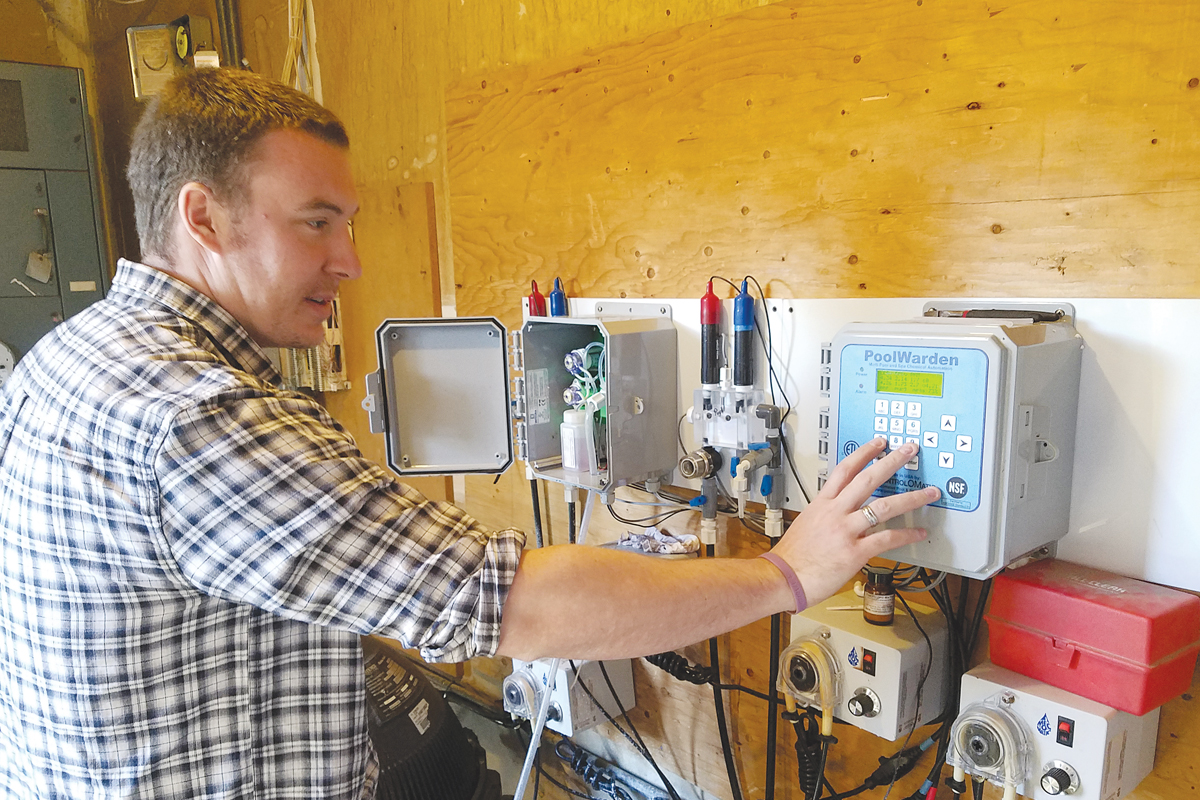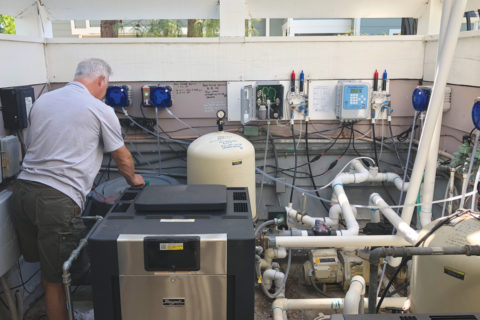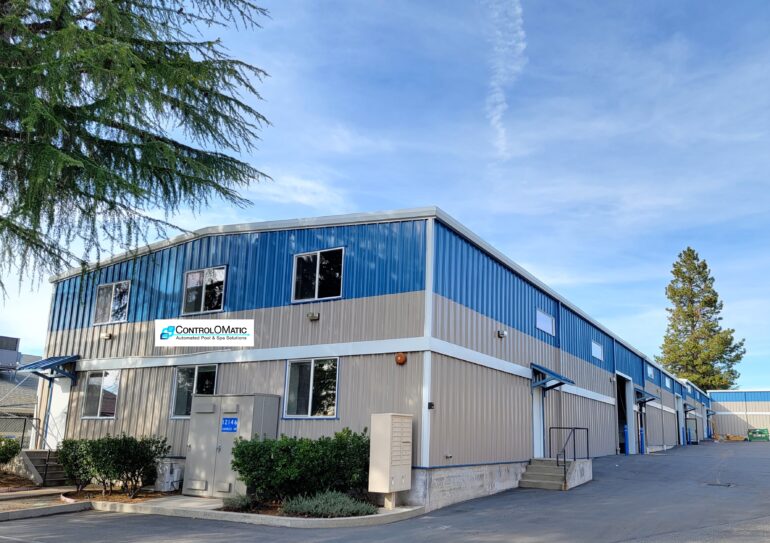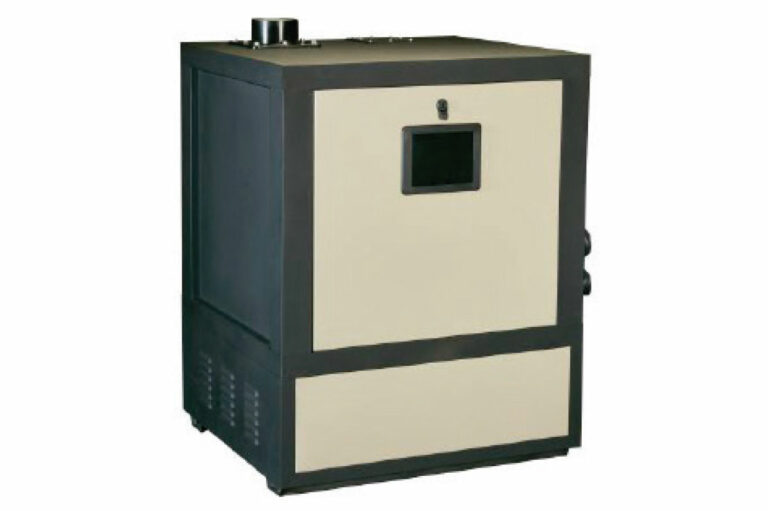The Rise of Automation

Human error is largely to blame when a commercial pool experiences problems, which is why automated systems are gaining popularity year after year.
An automated system eases the burden of having to be on-site several times a day to take a reading. And with growing public concern around water condition in commercial pools, these systems ensure cleaner and safer waters.
“Automation is an excellent first step because it automatically monitors and controls sanitizer and pH levels,” says Lance Fitzsimmons, chemical automation sales and support for ControlOMatic Inc. “Consistency in these levels is key to maintaining good water quality.”
Troy McGinty, global product manager for commercial products for Hayward Commercial Pools, says awareness of automation in the sector became more prevalent at the beginning of the 21st century.
“It’s a safer way to keep balanced water,” McGinty says. “The controller is able to monitor and make readings every minute on the minute, which we would never be able to do in a manual way. That makes a lot more sense and keeps things a lot more safe.”
Codes and Regulations
Mike Fowler, commercial sales and marketing manager for Pentair Aquatic Systems in Sanford, North Carolina, notes the push for the Model Aquatic Health Code and regulations such as Title 22 in California have brought more importance to balanced water and safer pool environments in commercial pools.
In the Model Aquatic Health Code, Fowler explains, it becomes mandatory for Ozone or UV to be a secondary sanitizer in commercial pools. For indoor pools, the use of UV systems — as a secondary sanitizer or as a water conditioning device — helps eliminate chloramines from the water and has a tremendous impact on indoor facilities.
“The use of automated chemical controllers helps facilities maintain good chemical levels in pools without the worry of having to be on-site 24/7,” Fowler says. “Some of the advancement in these controllers allows readings to be taken from the controllers themselves and be kept in a logbook for health department reasons.”
Title 22 allows the readings from the automated chemical controller to be logged down a few days a week. This allows the pool maintenance manager time to do other pool-related tasks.
Still, Fitzsimmons notes, there has been a lot of resistance from local health departments to automate the process.
“In regards to Title 22 specifically, the guidelines have been established but there is no continuity in enforcement and in some cases enforcement has strayed from the letter of the law so some approved systems are not honoring specific requirements,” Fitzsimmons says.
 Making Things Easier
Making Things Easier
In the chemical automation market, technological advancements have made for better remote communication with a facility’s status, allowing more proactive service so problems can be resolved before they become hazardous.
“Alarm conditions can be sent as a text or email, and in some cases, problems can be addressed by remotely accessing the chemical automation system,” Fitzsimmons says. “UV systems have also provided a means to easily enhance water sanitization and quality.”
Some new systems have access through the internet, so those properties or service companies that use chemical automation and have several bodies of water to manage, can monitor all and get daily feedback on the water chemistry of the pools and spas, and whatever other bodies of water they have.
On the UV side, NSF has recently created a new NSF-approved area for UV called Water Conditioning Device. “This has allowed for UV Systems to be added into existing bodies of water to aide in the chemical balancing as well as the elimination of chloramines in indoor facilities,” Fowler says.
McGinty says wireless communication systems have really made a difference in the last few years. These allow controllers to reach out by text message or email to alert the operator of any problem.
Scott Kather, president of Aqualine Pool Service, Inc., in Rancho Santa Margarita, California, says the cost of these systems deters customers.
“I have some people who still elect for me to go out every single day versus putting in a controller, and I try to convince them that installing a controller will be more cost effective in the long run,” Kather says. “The health departments have been more apt to close pools, so it’s just a matter of time before more people are willing to see how it can provide a more consistent water chemistry balance and keep the pool open.”
Looking Ahead
The future of automation continues to be bright as younger, technology-savvy people come into the industry and understand how automation has been proven to enhance aquatic safety just as it has for many other processes.
Fowler notes that automation is continuing to become more important in residential pools as people increasingly prefer low-maintenance options, and he’s noticing the same in commercial pools.
“I’m seeing more automated systems for chemical control, backwashing of filter systems, turning on lights and overall pump room control, which gives maintenance managers a sense of ‘backup,’ meaning they’re not the only person responsible for keeping the pools properly maintained,” Fowler says. “They can use this automation to assist them in helping keep those bodies of water not just appealing to the eye with crystal clear water, but also providing a safe environment and experience for their guests.”





